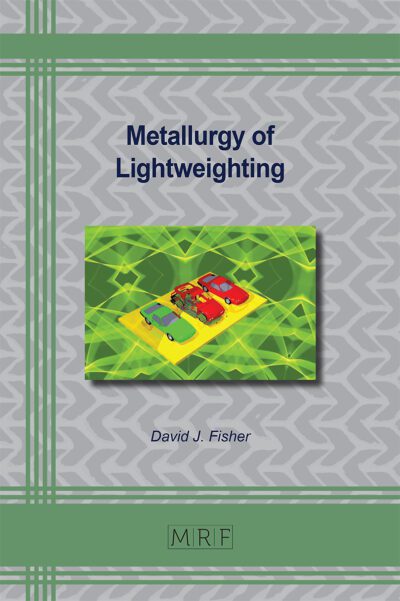Analysis of fatigue behaviour of self-piercing riveted joints under cyclic loading using laser vibrometry
Viktoria Olfert, Maik Gollnick, Keke Yang, Jacob Krause, David Hein, Gerson Meschut
Abstract. In the field of online condition monitoring, non-destructive testing methods using active acoustic testing [1] emerged as innovative tools. These techniques are particularly effective because damage in joined structures leads to significant changes in their vibrational characteristics. However, the consistent use of online condition monitoring through active acoustic testing combined with complex pattern recognition for early crack detection in joined components has not yet been fully established. This research aims to develop an online crack detection system employing pattern recognition techniques under cyclic loading during fatigue tests, utilizing non-contact active acoustic testing with laser vibrometry. Due to the wide range of materials that can be joined, mechanical joining processes can be used in many different industry branches. Self-pierce riveting (SPR), in particular, is a well-established joining process. Therefore, the investigations for online crack detection initially focus on SPR joints. To achieve this, the fatigue behavior of SPR joints in a lap-shear configuration was characterized. Experimental fatigue testing demonstrated that SPR joint failure occurs either through cracks propagating in the sheet material away from the rivet or in the rivet foot, depending on the material combination. Laser vibrometry has been successfully used as a crack detection system and has proven to be effective in detecting crack initiation in SPR joints. Cracks can be detected without contact regardless of the material combination, the damage location, the size of the damage, or the type of damage. The optimization of the crack detection system involved several key enhancements, including adjusting data acquisition to improve crack detection, incorporating principal component analysis (PCA) to reduce dimensionality, and implementing a classification model based on a global training dataset. An intuitive, problem-specific software demonstrator for analyzing the crack initiation behavior of SPR joints under cyclic loading was developed and iteratively optimized. Future work will focus on the implementation of an autoencoder network to further enhance crack detection capabilities.
Keywords
Self-Piercing Riveting, Fatigue Failure, Laser Vibrometry
Published online 5/7/2025, 10 pages
Copyright © 2025 by the author(s)
Published under license by Materials Research Forum LLC., Millersville PA, USA
Citation: Viktoria Olfert, Maik Gollnick, Keke Yang, Jacob Krause, David Hein, Gerson Meschut, Analysis of fatigue behaviour of self-piercing riveted joints under cyclic loading using laser vibrometry, Materials Research Proceedings, Vol. 54, pp 1422-1431, 2025
DOI: https://doi.org/10.21741/9781644903599-154
The article was published as article 154 of the book Material Forming
![]() Content from this work may be used under the terms of the Creative Commons Attribution 3.0 license. Any further distribution of this work must maintain attribution to the author(s) and the title of the work, journal citation and DOI.
Content from this work may be used under the terms of the Creative Commons Attribution 3.0 license. Any further distribution of this work must maintain attribution to the author(s) and the title of the work, journal citation and DOI.
References
[1] J. Kolerus and J. Wassermann, Zustandsüberwachung von Maschinen (utb GmbH, Stuttgart, Deutschland, 2017). https://doi.org/10.36198/9783838551814
[2] L. Pook, Metal Fatigue: What It Is, Why It Matters (Springer Netherlands, Dordrecht, 2007).
[3] J. P. McCrory, A. Vinogradov, M. R. Pearson, R. Pullin, and K. M. Holford, in Acoustic Emission Testing, Ed. by C. U. Grosse, M. Ohtsu, D. G. Aggelis, and T. Shiotani, 529-565 (Springer International Publishing, Cham, 2022). https://doi.org/10.1007/978-3-030-67936-1_18
[4] F. C. Campbell, Elements of metallurgy and engineering alloys (ASM International, Materials Park, Ohio, op. 2008). https://doi.org/10.31399/asm.tb.emea.9781627082518
[5] J. Y. Kim, L. Jacobs, and J. Qu, in Nonlinear Ultrasonic and Vibro-Acoustical Techniques for Nondestructive Evaluation, Ed. by T. Kundu, 225-261 (Springer International Publishing, Cham, 2019). https://doi.org/10.1007/978-3-319-94476-0_6
[6] H. Sohn, H. J. Lim, M. P. DeSimio, K. Brown, and M. Derriso, Journal of Sound and Vibration 333, 5 (2014). https://doi.org/10.1016/j.jsv.2013.10.032
[7] J. Chen, S. Yuan, and X. Jin, Mechanical Systems and Signal Processing 131 (2019). https://doi.org/10.1016/j.ymssp.2019.05.022
[8] Y. F. Lee and Y. Lu, Mechanical Systems and Signal Processing 163 (2022). https://doi.org/10.1016/j.ymssp.2021.108138
[9] Y. Zhu, F. Li, and W. Bao, Structural Health Monitoring 20, 3 (2021).
[10] Acoustic Emission Testing, Ed. by C. U. Grosse, M. Ohtsu, D. G. Aggelis, and T. Shiotani (Springer International Publishing, Cham, 2022).
[11] M. Chai, Z. Zhang, Q. Duan, and Y. Song, International Journal of Fatigue 109 (2018). https://doi.org/10.1016/j.ijfatigue.2017.12.017
[12] M. Chai, X. Hou, Z. Zhang, and Q. Duan, International Journal of Fatigue 160 (2022). https://doi.org/10.1016/j.ijfatigue.2022.106860
[13] J. He, X. Guan, T. Peng, Y. Liu, A. Saxena, J. Celaya, and K. Goebel, Smart Mater. Struct. 22, 10 (2013). https://doi.org/10.1088/0964-1726/22/10/105007
[14] Z. Han, H. Luo, J. Cao, and H. Wang, Materials Science and Engineering: A 528, 25-26 (2011). https://doi.org/10.1016/j.msea.2011.06.065
[15] M. Gollnick, P. Giese, D. Hein, G. Meschut, and D. Herfert, Materials Testing 62, 9 (2020). https://doi.org/10.3139/120.111558
[16] Deutsche Institut für Normung e.V. (DIN), Mechanical Joining – Fatigue Testing of Mechanical Joints (Beuth, Berlin, Germany, 2017), DIN EN ISO 35227.
[17] J. Moraes, H. M. Rao, J. B. Jordon, and M. E. Barkey, Fatigue Fract Eng Mat Struct 41, 1 (2018). https://doi.org/10.1111/ffe.12648
[18] D. Li, L. Han, M. Thornton, and M. Shergold, in SAE Technical Paper Series: SAE Technical Paper Series (SAE International400 Commonwealth Drive, Warrendale, PA, United States, 2010).
[19] German Welding Society (DVS)/European Research Association for Sheet Metal Working (EFB), Testing of joining properties – Testing of properties of mechanically and combined bonded joints (DVS-Verlag, Duesseldorf, Germany, 2008), DVS-EFB 3480-1.
[20] I. T. Jolliffe, Principal Component Analysis (Springer New York, New York, NY, 1986). https://doi.org/10.1007/978-1-4757-1904-8
[21] Z. J. Zhou, Z. C. Huang, Y. Q. Jiang, and N. L. Tang, Materials (Basel, Switzerland) 15, 9 (2022).













